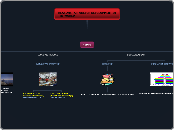CI 163 Curriculum & Pedagogy
The Solar System is the gravitationally bound system of the Sun and the objects that orbit it, either directly or indirectly. Of the objects that orbit the Sun directly, the largest are the eight planets, with the remainder being smaller objects, the dwarf planets, and small Solar System bodies.
Universal Design for Learning
Saturn is known most for its rings.
Galileo Galilei first thought it was an object with three parts: a planet and two large moons on either side.
Not knowing he was seeing a planet with rings, the stumped astronomer entered a small drawing — a symbol with one large circle and two smaller ones — in his notebook.
The rings are made of ice and rock and scientists are not yet sure how they formed. The gaseous planet is mostly hydrogen and helium.
UDL Principles
How long does it take for Saturn to go around the sun?
Action & Expression
Engagement
Representation
Barriers to Traditional Education
Critical Thinking into Lesson Design
Uranus is an oddball. It has clouds made of hydrogen sulfide, the same chemical that makes rotten eggs smell so foul.
It rotates from east to west like Venus. Its tilt causes extreme seasons that last 20-plus years, and the sun beats down on one pole or the other for 84 Earth-years at a time.
Methane in the atmosphere gives Uranus its blue-green tint. It also has 13 sets of faint rings.
Depth of Knowledge
A planet's day is the time it takes the planet to rotate or spin once on its axis.
Write down Uranus's day measured in Earth days.
designates how deeply students must know, understand, and be aware of what they are learning in order to attain and explain answers, outcomes, results, and solutions
Z Charts for Writing Objectives
How long does it take for Uranus to go around the sun?
Bloom's Taxonomy
a set of three hierarchical models used to classify educational learning objectives into levels of complexity and specificity. The three lists cover the learning objectives in cognitive, affective and sensory domains
Direct Instruction
Neptune is about the size of Uranus and is known for supersonic strong winds.
Neptune is far out and cold.
The planet is more than 30 times as far from the sun as Earth.
Neptune was the first planet predicted to exist by using math, before it was visually detected. Neptune is about 17 times as massive as Earth and has a rocky core.
Writing Behavioral Objectives
Neptune has thirteen moons that we know of and one more waiting for confirmation.
The largest moon is slightly smaller than Earth's Moon and has active volcanoes which erupt like geysers and eject nitrogen frost over the surface.
Name this moon and at least 4 others.
Designing UDL Lesson Goals
How long does it take for Neptune to go around the sun?
Lesson Development
A planet's day is the time it takes the planet to rotate or spin once on its axis.
Write down Neptune's day measured in Earth days.
Lesson Analysis
The Myth of Averages
It was once considered a planet but in August 2006 the International Astronomical Union (IAU) downgraded the status of Pluto to that of “dwarf planet.”
Pluto is unlike other planets in many respects. It is smaller than Earth's moon; its orbit is highly elliptical.
It's a cold, rocky world with a tenuous atmosphere. Pluto is a very active ice world that's covered in glaciers, mountains of ice water, icy dunes, and possibly even cryovolcanoes that erupt icy lava made of water, methane or ammonia.
Ban the Average
Curriculum is designed for the average (age appropriate) student; however, each student varies:
- Memory
- Language
- Knowledge
- Reading
- Vocabulary
- Curiosity
- Perceptual
- Cognitive
- Interest
How long does it take for Pluto to go around the sun?
Rather than design to the average, we must design to the edges and this will allow us the ability to reach those students who would've been out of arms length.
Assessments
Jupiter is a giant gas world that is the most massive planet in our solar system.
Its swirling clouds are colorful due to different types of trace gases.
And a major feature in its swirling clouds is the Great Red Spot, a giant storm more than 10,000 miles wide. It has raged at more than 400 mph for the last 150 years, at least.
Jupiter has a strong magnetic field, and with 75 moons, it looks a bit like a miniature solar system.
Summative
How long does it take for Jupiter to go around the sun?
Are used to evaluate student learning, skill acquisition, and academic achievement at the conclusion of a defined instructional period—typically at the end of a project, unit, course, semester, program, or school year.
Formative
A wide variety of methods that teachers use to conduct in-process evaluations of student comprehension, learning needs, and academic progress throughout the instructional year.
Neuro-Education
Mars is a cold, desert-like place covered in dust. This dust is made of iron oxides, giving the planet its iconic red hue.
Mars shares similarities with Earth: It is rocky, has mountains, valleys and canyons, and storm systems ranging from localized tornado-like dust devils to planet-engulfing dust storms.
Brain Compatible Instructional Strategies
How long does it take for Mars to go around the sun?
Active learning
Graphic Organizers
A planet's day is the time it takes the planet to rotate or spin once on its axis.
Write down Mars's day measured in Earth days.
Mnemonic Strategies
Designed to help students improve their memory of important information. This technique connects new learning to prior knowledge through the use of visual and/or acoustic cues
Cooperative Learning
Earth is a water world, with two-thirds of the planet covered by oceans.
It's the only world known to harbor life.
Earth's atmosphere is rich in nitrogen and oxygen.
Its name originates from 'Die Erde,' the German word for 'the ground.'
Earth may once have had two moons, nowadays it has just one.
Student-to-Student Structure
A planet's day is the time it takes the planet to rotate or spin once on its axis.
Write down the Earth's day in hours.
Defintion
The process of breaking a classroom of students into small groups so they can discover a new concept together and help each other learn
Classroom Management
Venus is Earth's twin in size and has no moons.
Its surface has various mountains and volcanoes. Because of its thick, toxic atmosphere that's made of sulfuric acid clouds, Venus is an extreme example of the greenhouse effect. The average temperature on Venus' surface is 900 F (465 C).
Venus spins slowly from east to west, the opposite direction to most of the other planets.
The Greeks believed Venus was two different objects — one in the morning sky and another in the evening. Because it is often brighter than any other object in the sky, Venus has generated many UFO reports.
Attention Continuum and Surface Management
A planet's day is the time it takes the planet to rotate or spin once on its axis.
Write down Venus's day measured in Earth days.
Role of Socio Emotional Learning
Our Solar System has eight “official” planets which orbit the Sun.
Each planet is at a different distance from the sun. Name its position.
Make Time for Conversations
Invite student to ask for help
Show Interest in Student's Work
Main topic









